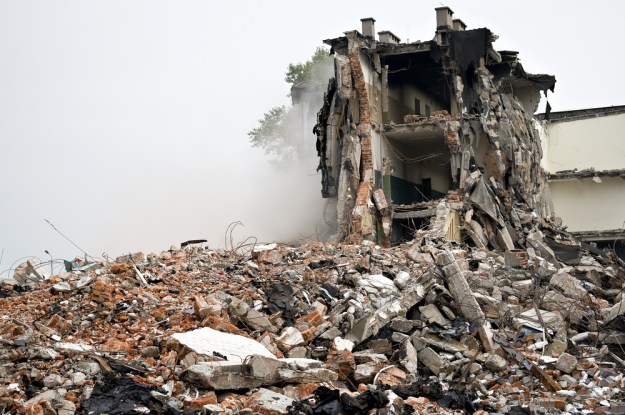 When a major earthquake strikes an urban area, the results are often devastating. The destructive quake in Haiti in early 2010 is clear evidence of that.
When a major earthquake strikes an urban area, the results are often devastating. The destructive quake in Haiti in early 2010 is clear evidence of that.
When buildings come down, rescue workers have a limited time to get to those trapped in the rubble. But first rescuers need to know the precise location of such people. This can be done in a number of ways. Thermal-imaging cameras can detect body heat, and cameras on the end of flexible poles can be pushed through tiny gaps in the rubble to search for survivors. Rescue dogs can also be used to sniff out those who are trapped.
And now scientists based in the UK are developing what has been dubbed an ‘electronic sniffer dog,’ which can detect particular chemicals on a person’s breath. Research published in the Journal of Breath Research says that successful tests were carried out in a mock-up of a collapsed building.
The research said that the device was able to detect molecules such as acetone and ammonia in the participants’ breath while they were under the rubble.
According to a BBC report, a demonstration device has already been built, with the idea that the machines could one day work alongside sniffer dogs in disaster areas.
Loughborough University’s Paul Thomas, who helped conduct the research, said: “Dogs are fantastic but they don’t work for very long, and they undergo injury and suffering as a result of their work in a search and rescue environment.”
In an effort to discover what kind of chemicals are given off in human breath and to see how the breath is affected by the presence of rubble and other materials, Thomas persuaded eight volunteers to spend six hours cooped up in a box.
The volunteers’ breath was then passed through a cylinder containing rubble and similar materials, with special sensors measuring the precise nature of the gases coming through at the end. Paul Thomas was happy with the results, but wants to further develop the device.
The scientist is hoping to find volunteers willing to spend even longer than six hours in the simulator, as the body will give off different chemicals the longer it goes without food. They’ll then be able to build an even more effective electronic sniffer dog for use in disaster areas. Hopefully the mutts won’t mind.
[Image courtesy of Dariusz Kantorski/Shutterstock]


